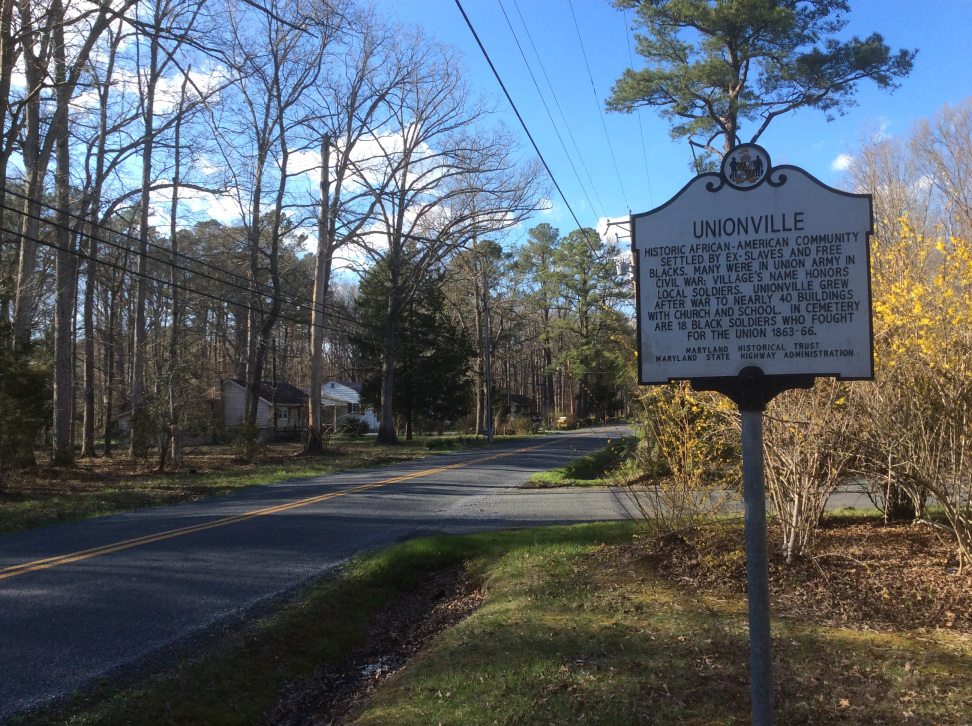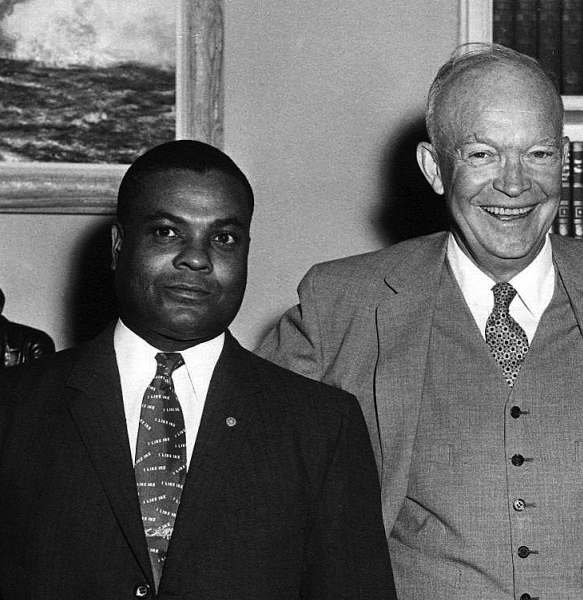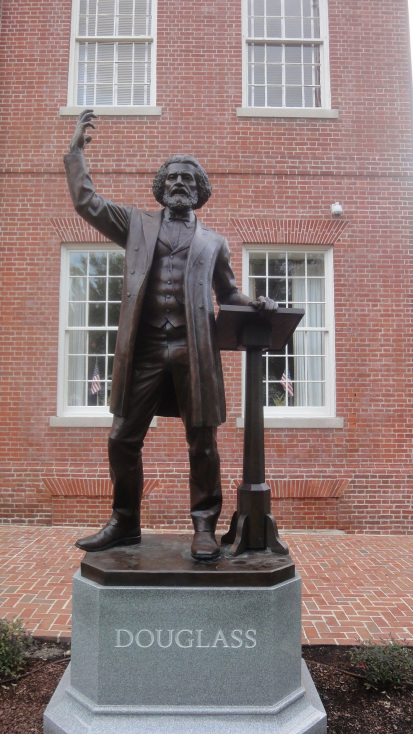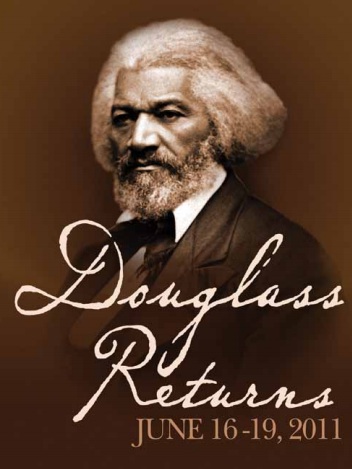Liberation Tour
 Time Travel Tour to the Liberation of Frederick Douglass
Time Travel Tour to the Liberation of Frederick DouglassMake your DC visit memorable, by traveling back in time to visit the liberation of Frederick Douglass. Time Travel Tour living historians will transport you back to the birth of the man who led the liberation of four million Americans from enslavement, the place where he began it and provide you the opportunity to pay your respects to the liberation communities - to the Americans of African Descent whose ancestors gave their lives as Martyrs and Soldiers to help us achieve the Justice, Equality and the Reconciliation we strive for today to gulf the chasm of misunderstanding between communities built upon the labor of the enslaved and the Liberation communities they founded after freedom, with love.
Frederick Douglass was born to an exceptional literate mother Harriet Bailey during 1818 in Cordova Maryland.
He was raised in the home of his grandmother Betsey and grandfather Isaac along Tuckahoe creek, while his
mother and siblings labored in the Wye concentration camp 12 miles west and thus unable to see one another.
Reaching the laboring age of six, Douglass walked those 12 miles, and began his labors for the concentration
camp. Tragically his mother died, leaving him orphaned, soon thereafter. To add to his woe, at the age of eight
he was transfered to a Auld prison, away from his Grandmother, brothers and sisters in Baltimore where he was its
first inmate. Ignorant of the laws and the reasons behind them, the prison guard taught Frederick Douglass
reading as his mother would have, the first kind act of a European Frederick had experienced after 7 years
of their torture. The words the prison warden used to castigate the guard impressed upon
Douglass that knowledge has the power to defeat enslavement and the desire for learning his mother bequeathed
to him
carried him on to outsmart that knowledge from the warden's child and from indentured slavery children in the
neighborhood. He would practice letters between the letters of their exercise books. He would trick the boys
into revealing new spellings when he said he could spell better then they. Finally he bought his first book, which he
read over and over, which detailed the liberation of a tenant from enslavement by virtue of his defeating
every justification for it raised by his enslaver!
"The cries of the fatherless and the widow, who have groaned
under your oppression have reached the heavens and you have
reason to fear they will be answered with
vengeance on your head" (Columbian Orator, p.93, 1797)
Frederick noted that the hand of the jailers were held by the public light which close neighbors provided.
This would later be used in his extensive public speaking in Europe and throughout America to foster that
sentiment which would lead to a rejection of the fugitive slave act and the southern United states
desire to break its concentration camp industrial complex into a separate nation 35 years later.
The prison sought to reorganize itself and summoned Frederick back to the Wye Concentration Camp in 1830
at the age of 12, where his now literate and fully awakened self, was conscious of his being studied
and treated like pigs and sheep as they divided the jail property between two new concentration camps
that were to form. As he awaited his next transfer, a warden of one of the two, beat his brother almost
to death before his eyes and told Frederick to expect the same! In the end, he was transfered back to Baltimore
where he could do nothing to help his grandmother Betsey who was killed through neglect having been exiled to die
without substance and family to care for her, having outlived her utility to the concentration camp labor effort.
After two more years in Baltimore improving his reading and writing, he had made his first strong friendships with the indentured Irish in Baltimore who were enslaved only until age 21. Yet once again at age 14, in March 1832, the insane concentration camp regorganized itself again, and send him to know hunger as he was runited with his sister Eliza and Aunt Priscilla. Here he was introduced to starvation given only 1162 calories of food per day (a pint/314g of cornmeal), well below what he burned everyday. He managed to benefit again from another naive Jailer who taught Frederick and others to read the New Testament in a Sabath School. With this discovered and broken up, it was decided to send Frederick on the first of January 1833 to a maximum security facility where he would receive severe whippings every other week until blood poured forth from his lacerations. His starvation rations were coupled with the ridges on his back big enough to put a finger in between, were enough to break his spirit, his intellect languished, his cheerful spark died. One Sunday when he was beaten so harshly he almost died, he took flight for the first time, at the age of 15, and ran to seek justice from the warden. The warden was upset that he thought he could raise a complaint, returned him promptly. At ropes end, Frederick Douglass at the age of 15 so beat up that jailer, that he was left alone thereafter. He was then moved to a low security concentration camp thereafter 3 miles east in 1834. Here enjoying his return to full rations and rest at sunset, he had the return of his energy and copied his experience from two years previous, and he himself started the first ever Sabath School on the eastern shore of Maryland for Americans of African descent schooling 40 secretly. He was so happy "activating" their minds. The jailer who discovered and destroyed the school put on fullest display the contrast of today's official history of Talbot County and the reconciliation needed to bridge with love the vast chasm between the truth and the utmost perversion thereof:
Garrison West is noted on page 401, of Samuel Harrison's History of Talbot County, MD 1661-1861, Volume 2, Published 1915 in Easton: "He was not only fervid in his piety but correct in his life and conversation - a man of whom no evil could be said, with truth, and of whom, in fact, nothing was said until they exhibited as perhaps too strenuous insistence upon the adoption of their views of church polity...Garrison West best illustrated this. He was a devout and irreproachable man. .. If ever a man deserved canonization, it was this humble, ignorant, but truly holy man. The most diligent advocatus diaboli could not find spot nor flaw in him.. The memory of this good man is a perpetual benediction upon this community."
In contrast, Frederick Douglass provides an eye-witness account to Garrison's inhumanity in breaking up the school and the light of the lives of those imprisoned by him. He goes on to add:
Garrison West representes, "the corrupt, slaveholding, women-whipping, cradle-plundering, pimping, partial and hypocritical Christianity of Talbot County where devils are dressed in angels' robes, and hell presenting the semblance of paradise."The local history continues to make no effort at reconciliation to this day.
Thereafter, Frederick made for escape, but unlike the Pearl 14 years later, he did not know of Canada or the underground railroad. Nonetheless, he and his uncle Henry Bailey, and brothers Henry and John Harris as well as Charles Roberts began working together for their plan from three different concentration camps. Using Frederick's literacy to forge passes for travel to Baltimore they were to board a canoe for 90 miles to reach Elkton and walk towards Pennsvylavnia and freedom! Their plan was foiled by an untrustworthy ear, and they were marched behind horses for 15 miles to Easton, Maryland where they were held in prison to await their fate. Frederick Douglass in 1835 at the age of 17 would not return to Easton for another 39 years, when he would escape to freedom, and help liberate millions, and return a hero and dedicate two churches which stand to this day, the Asbury U.M. Church and the Bethel A.M.E. Church. Subsequently, on June 18th 2011, a statue honoring Frederick Douglass was unveiled on the Talbot County Courthouse grounds representing a 137 year arc to permit the descendants of the concentration camp profiteers to begin the labor of love of reconciliation with the liberation communities that they co-exist with to this day.
 Wye Concentration Camp
Wye Concentration Camp
Traveling back in time to the Wye Concentration Camp we find it far removed from Easton, isolated and hidden.
It was located in it's place
so that the sounds
and cries
of the dying would never reach the ears of the civilized.
Reflect upon the Wye Martyrs within a place of state sponsored institutionalized brutality.
Here over the gates of Wye, thousands had been kidnapped into prison
four years before
enslavement was sponsored by the State of Maryland
in 1663 until past enslavement was prohibited in the State 200 years later on November 1st 1864. The first African was
brought to Wye came
just 17 years after the first placed their kidnapped foot upon this land, giving this place the ill distinction of
standing as a remembrance to the entirety of enslavement in Maryland.
Not only did the Wye Concentration Camp warden go on to petition the state sponsor to expand its terror to other states
he also invested in for profit private prisons in Missisiipi and Louisiana. His was the most profitable of all the concentration
camp in Maryland. With the escapes of Frederick Douglass, the rise of the Free Soil Party following the escape of the Pearl and
the defeat of their Legalized African American Kidnapping Law of 1850 by the heroism of William Parker defeating that law by
force of arms helped give rise to the Wye Warden sending many of his employed Jailers to go fight for the perpetuation of the
system against their former prisoners who had escaped Wye! After the African
Self-Liberated soundly defeated the Wye Jailers in battle, then the Wye warden gave the liberated
Americans of African descent a cruel bargain, accept long-term contract apprenticeship for their children without pay, low wages
and high
debt for themselves or be evicted from the modest homes built on land their family have maintained
for 200 years. A cruel choice indeed with wartime inflation driving up food prices and the winter settling in. The wardens
even successfully awarded themselves a bounty payment of $100 for each of the soldiers who fought and won the
liberation of their families in May of 1865.
Finally freed, 87,000 slaves in Maryland were still denied even the most basic rights under the law. Voting, for example,
was restricted to European descent men, and Maryland would go on to reject both the 14th Amendment, which granted African descent
residents citizenship and due process, and the 15th Amendment, which granted the right to vote. Wye and other concentration
camps set up laws and restrictions to keep operations functioning with the aid of presidents after Lincoln's assassination. It
took another 95 years for
the great grand children of the prison wardens to be overpowered and see the 14th Amendment to pass on April 4 1959 addressing
citizenship
rights and equal protection of the laws. And over 110 years, on May 7 1973 for the 15th Amendment to pass granting
African descent American men the right to vote. Then another 28 years to elect Moonyene Jackson-Amis to be the
first African Descent woman to be elected in the history of the Eastern Shore of Maryland. The next year Sara Bynum-King
became the first to head a town or city administration on Eastern shore!
Frederick Douglass returned 43 years after his liberation from the Wye Concentration Camp on June 12, 1881 and was received in the
house politely by Douglass' former Warden's grandson Charles Howard Lloyd beginning a process of reconciliation that continues to this day.
 Image of Mary Donnell Tilghman (1919-2012) granddaughter of the Warden's grandson Frederick met in 1881
Image of Mary Donnell Tilghman (1919-2012) granddaughter of the Warden's grandson Frederick met in 1881

 Unionville
Unionville
Beyond the southern border of the Wye Concentration Camp we travel to Unionville to meet those soldiers
who liberated Wye in 1864! 18 heroes, like Douglass, escaped Wye and joined forces with the USCT to liberate the rest of
their imprisoned families victoriously. After the war they founded a free village named Unionville, rejecting the Wye
offer of continued virtual enslavement as apprentices and share croppers. James Cowgill sold the land to the Veterans prompted
by his love for justice that led him to lead the 108th USCT Regiment as a Captain in victory over those Talbot county
jailers who
joined the insurrection forces. He busily offered each soldier a plot of land
for a dollar a year for thirty years in addition to land for a school and church, while the US government provided $100
for each of those same soldiers to the Wye family in ransom payment. Prior to the completion of a school itinerant
preachers of the AME Church would preach under the branches of a majestic large oak tree which still stands.
 Unionville grew after the war to nearly 40 buildings with St. Stephen’s African Methodist Episcopal (A.M.E.) Church and a school.
This was no small feat as frequently ex-jailers would burn schools and churches to the ground.
From the Church’s cemetery rise 18 heroic liberators:
Unionville grew after the war to nearly 40 buildings with St. Stephen’s African Methodist Episcopal (A.M.E.) Church and a school.
This was no small feat as frequently ex-jailers would burn schools and churches to the ground.
From the Church’s cemetery rise 18 heroic liberators:
Horace Gibson 1841-1894
He like Douglass was enslaved at the Wye concentration camp
and courageously escaped the prison to join the Union Army.
He enrolled in company B of 7th USCT Regiment in September of 1863 in Baltimore.
He earned the rank of Corporal by October of 1864.
His first lieutenant, stated "He was one of the best soldiers that ever stood."
He worked as a farm hand and married Maria Gibson on June 29 1867 and had 5 children.
June 29th was a very happy day in Unionville as USCT veteran Joseph Johnson
also married Anna Richardson that day. They were both married by
an African descent pastor named Peter Burrows. The Gibson's saved their money in the U.S.
Freedman's Bank taking advantage of all opportunities available to them for advancement.
Enolds Moaney
Enolds' father was brought to america via port of annapolis. He was also a USCT veteran and Unionville founder
had a cousin Phil Moaney who
purchased land in adjacent Copperville in 1867. Phil walked one hour to unionville for services
with his cousin from 1870 thru 1895 when they built their own church. Enold's nephew and Phil's son John Moaney
had a son John Moaney Jr. (1914-1978) who joined the United States Army in October 1941
and was sent to England with the 751 Quartermaster Company. In 1942 he transfered to Dwight D.
Eisenhower's personal staff and served as Eisenhower's valet for the next 27 years. Enold's own
grandson, also named John, spoke at the historic 2004 visit to the USCT Memorial by the 31 descendants of the
USCT soldiers on Veteran's day.

 2004 Image of Mr. John Moaney (1919-2006) grandson of USCT Soldier, Wye Self-Liberator and Unionville Founder
Mr. Enolds Moaney speaking at USCT memorial in Washington DC
2004 Image of Mr. John Moaney (1919-2006) grandson of USCT Soldier, Wye Self-Liberator and Unionville Founder
Mr. Enolds Moaney speaking at USCT memorial in Washington DC
John Backwell
Together with Horace, John escaped Wye on the underground railroad to Baltimore and Joined Company
B of the 7th USCT Regiment serving in
Baldwin, Florida; Johns Island, South Carolina; Darbytown Road, Virginia; and Petersburg, Virginia.
Mr. Backwell had five children, Elizabeth (b. 1872), Annie (b. 1878), Fannie Ellen (b. 1884), Henrietta (b. 1886),
and Emory (b. 1894). By 1907, he was earning twelve dollars a month from his USCT pension.
Matthew Roberts
While on the verge of being whipped by his jailers, Matthew liberated himself from Wye and ran as far another
concentration camp named new design and onto the Miles River bridge from where he caught a steam boat to Balitmore
and joined Company K of the 4th USCT Regiment in September of 1863. He fought at Peterspurgh, City Point, Chapins Farm,
Dutch Gap, Spring Hill, Jordans Farm and Bermuda Hundred. He was wounded in the leg on September 29 1864, at a time
when the enslaver rebels would kill the wounded on the battlefield! Matthew's life was spared because the rebel
who was to kill him was a Jailer in the Wye Concentation camp and in exchange for saving his life, asked Matthew to
send a message to his father. Matthew refused the amputation practice so common at the time, and was sent to Fort Monroe
to recover. He was discharged on May 11 1866 from Fort McHenry and paid $300 for his service.
Peter Johnson (1833 - 1904)
Peter was enslaved as a coachman for the Warden's family. Their cruelty showed no mercy to him, and after his escape
on the Underground Railroad, he was found to have scars on his back as recorded at his Army enlistment. He joined
the 7th with John and Horace on Setpember 23rd 1863. He was shot in his left hand a year later on Darbytown Road in Virginia.
After his discharge from the army he returned to his pre-war wife Sarah Ann with whom he had 5 children. He began to receive a pension of $4.00 per month
from November 8 1889 onwards. He won the freedom of himself and his wife and passed away on May 7 1904.
 Frederick Douglass Memorial
Frederick Douglass Memorial
Time travel back to November 23-26 of 1878, when Frederick Douglass returned to Easton
for the first time since he was transfered from there to Baltimore from where he escaped
to freedom in 1838. Forty years later he returns as a guest of the Talbot County Republican Party,
to make speeches at the dedication of two African Methodist Episcopal churches and to a mixed audience
in the main courtroom in the
Court House in front of which his statue now stands.
Just two weeks prior Washington DC Marshal Frederick Douglass, enjoyed an evening at the White House with President
Hayes and First Lady Lucy Webb Hayes listening in the Green Room to Madame Selika and her
husband Baritone Mr. Sampson Williams the
first African Descent American
artistic performances in White House history. By this time Frederick Douglass had been the first American
of African descent to hold a federal office in US history for a year, serving as US Marshal. He would serve for another
three years hereafter.
At the courthouse he gave his famous "self-made men" speech which he had first delivered 19 years earlier.
His speech read in part:
"Men who are not brought up but who are obliged to come up in open and derisive defiance of all the efforts of society
and the tendency of circumstances to repress, retard and keep them down... From the depths of poverty such as these have
often come... Barefooted, homeless, and friendless, they have come. From hunger, rags and destitution, they have come;
motherless and fatherless, they have come, and may come...When we find a man who has ascended heights beyond ourselves...
we may know that he
has worked harder, better and more wisely than we. He was awake while we slept. He was busy while we were idle and was
wisely improving his time and talents while we were wasting ours...Give the [American of African Descent] fair play and
let him alone...Throw open to him the doors of the schools, the factories, the workshops, and of all mechanical industries."
One can scarcely imagine how such words uttered by a native son of Talbot County in its principle building stirred
the aspirations of all his cousins and former neighbors who heard him. The two, still standing, chruches which he
dedicated that day stand to the importance the community gave to Mr. Douglass. It would take over 100 years for
the European-Descent community to continue the reconciliation with Mr. Douglass which Charles Howard Lloyd had begun
in 1881.
 A great movement forward in the reconciliation between the descendants of the Wye kidnappers and the
descendants of the Unionville 18 liberators was begun in 2004 when Moonyene Jackson-Amis began the
Frederick Douglass Memorial Action Coalition. Her industry made her the first elected African Descent American
in the 400 years they have lived on the Eastern Shore of Maryland in 2001. She was inspired to this task
by her role model Harriet Tubman who she portrays as a living historian and has written and performed a play
"Gone North on a Secret Road." Her vision
, steadfast and strategic leadership brought a diverse, cross-section of the community together to successfully lobby the
Talbot County Council to allow a statue of Frederick Douglass to be built on the grounds of the Talbot County Court House
where he had spoken in 1878. The organization successfully raised more than $400,000 for the statue and won the Council
approval for the statue over bitter opposition from those who are supporters of the Prison Warden and Jailer statue also on the lawn.
A great movement forward in the reconciliation between the descendants of the Wye kidnappers and the
descendants of the Unionville 18 liberators was begun in 2004 when Moonyene Jackson-Amis began the
Frederick Douglass Memorial Action Coalition. Her industry made her the first elected African Descent American
in the 400 years they have lived on the Eastern Shore of Maryland in 2001. She was inspired to this task
by her role model Harriet Tubman who she portrays as a living historian and has written and performed a play
"Gone North on a Secret Road." Her vision
, steadfast and strategic leadership brought a diverse, cross-section of the community together to successfully lobby the
Talbot County Council to allow a statue of Frederick Douglass to be built on the grounds of the Talbot County Court House
where he had spoken in 1878. The organization successfully raised more than $400,000 for the statue and won the Council
approval for the statue over bitter opposition from those who are supporters of the Prison Warden and Jailer statue also on the lawn.
Finally in 2011 the great work was completed and the Statue was raised forevermore as a standard
for all to reflect upon the "Self-Made Man" he was in the very place he was last imprisoned in
Talbot county 173 years earlier, prior to his self-liberation and where he gave a Self-Made Man speech after working
successfully to defeat Enslavement as an abolitionist, newspaper publisher, underground railroad worker and Union
army recruiter to become the Self Made Man he describes.
 Easton Douglass Statue Unveiling Program June 2011
Easton Douglass Statue Unveiling Program June 2011
Tour Services
Time Travel Reservations
The following departures are available for you and your friends or family:Fight The Power Tour on August 7 2021 from 8am to 430pm EST in Richmond VA
Contact Time Travel Tours



